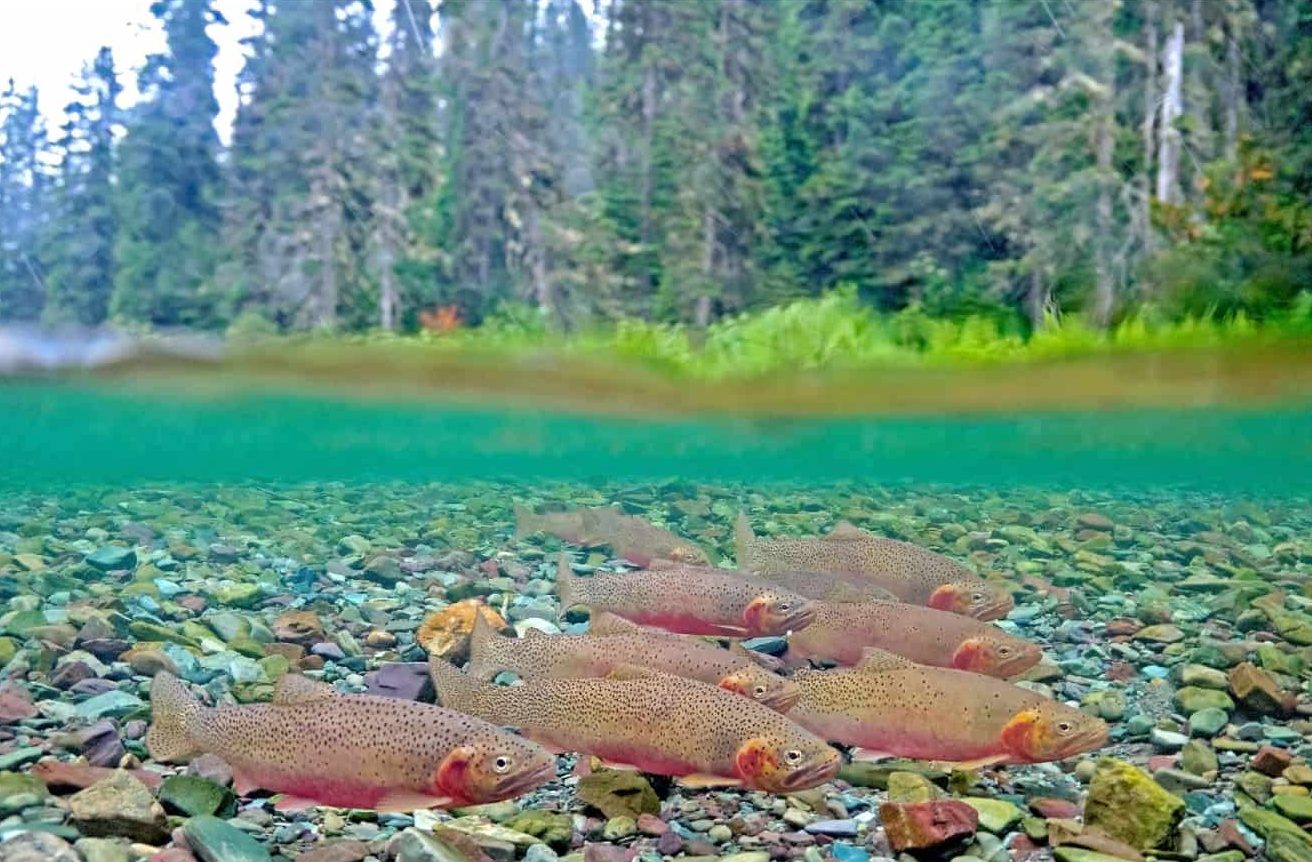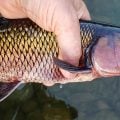Restoring Native Trout: We Haven’t Taken it Far Enough

Image by Pat Clayton
I’m a regular contributor to Hatch Magazine, one of my favorite outlets. And Chris Hunt—author of the recent Hatch piece “Have we taken our love for native trout too far?”—is one of my favorite outdoor writers.
So it pains me to offer the following rebuttal or, perhaps more accurately, complaint about Hunt’s recent Hatch piece: “Have we taken our love for native trout too far?”
I didn’t make it past his first sentence without dyspepsia: “It’s possible,” he writes, “we’ve taken our passion for native trout a bit too far.” That’s like telling Oliver Twist he might be binging on gruel.
There’s a cavernous deficit of “passion” for native trout among the angling community which generally assesses the value of trout by size and how they bend rods. That’s why native trout are smothered under an avalanche of non-native, stump-finned trout from hatcheries, and that’s why native-trout recovery is scandalously underfunded.
Recovery is possible only in a few small streams and lakes. On top of that, it’s consistently shut down or delayed by chemophobic outfits for which fish don’t count as wildlife and which are too lazy and arrogant to learn about the short-lived, organic piscicide rotenone—almost always the only tool available to save native trout from predation, competition and hybridization.
Hunt perpetuates the fiction that anglers must choose sides because there’s limited opportunity for simultaneous management of and advocacy for native and naturalized trout. His text rambles between good points about native trout, conflations of naturalized trout distribution with peregrinations of Homo sapiens, and dangerous and incorrect assertions that it’s probably “too late” to rescue native trout.
As the former communications director for Trout Unlimited (TU), Hunt should know better than to equate abuse of “indigenous people” by “European Americans” with abuse of aquatic ecosystems by private, state, and federal bucket biologists who fling multiple species of non-native fish around North American waterscapes like confetti. But Hunt has plenty of company. Such commentary is recurrent with people who should know better.
For example, this from a Montana fly-fishing instructor: “I’ve always found it interesting—and more than a little ironic—that the people advocating for native species protection and restoration don’t seem to feel the same way about the fate of Native Americans.” Huh?
And a Vermont fly-fishing instructor scolds me as follows: “Re. your attack on ‘mongrel trout’ in High Country News: Most Americans believe there is nothing wrong with human genetic mixing! I am a mongrel of sorts myself and delight in my diversity. We Americans … abhor those who seek human genetic purity! American military men and women have died and continue to die for the freedom of others oppressed by those who wish to impose the same limitations on man as you are seeking to impose on trout. One could argue that what you champion is an environmental form of ‘ethnic cleansing’ or the Nazi equivalent of racial purity.”
My response: “Genetic swamping by alien rainbow trout threatens to excise our rarest and most endangered salmonid, the Paiute cutthroat, from the planet. Unless your progenitors have successfully bred with, say, chimpanzees the ‘genetic diversity’ you delight in does not include this kind of inter-species hybridization.”
When angling educators dispense such nonsense how can we expect their students to be enlightened conservators of native trout?
In fairness to Hunt, I and other native-fish advocates objecting to his piece were already on edge. Our visceral reaction issues in part from similar fantasies (and far more ignorant utterances) expressed in a February 2022 podcast similarly entitled “Have We Gone Too Far With Native Species?” The host, Tom Rosenbauer, is Lead Enthusiast, Fly Fishing Outreach and Education at Orvis. His guest, Kirk Deeter, is TU’s Editorial Director and Vice President of Angling.
I should note that both Tom and Kirk are also among my favorite outdoor writers. Rosenbauer has made me a better fly caster. I raise major funds for TU, and I’ve written for Deeter’s magazine.
But their podcast was an appalling performance. Both Tom and Kirk condemn “poisoning streams to introduce native fish.” In other words, they oppose most native-fish recovery, including projects backed and funded by Orvis and TU. As trained fisheries professionals keep explaining, recovery of native fish is essentially impossible without rotenone. In modern fisheries management, rotenone has never been seen to permanently affect a native aquatic ecosystem except to restore it.
At least Hunt recognizes that it’s impossible to “displace non-native, yet naturalized fish that swim in most western waters.” The Orvis podcast, on the other hand, reinforces the illusion that native-fish purists are able to eradicate brown trout from all New World habitats regardless of size and are plotting to do so. Deeter accuses them of championing the elimination of “every brown trout in the country.”
“Yikes,” commented UMaine professor and salmonid authority Dr. Michael Kinnison. “If this is what Orvis now backs as responsible stewardship, then I think many folks are probably going to start rethinking where they buy their gear. The very notion that there’s too much native fish conservation and restoration when such efforts probably account for less than one in a thousand miles of fishable waters nationwide is such a skewed perspective… That’s pretty much saying they’re willing to compromise as long as the native fish folks don’t want anything.”
Such was the backlash to the podcast that Rosenbauer eventually changed the title to “Talking Trout with Kirk Deeter.” I salute him for that and, especially, for inviting Bob Mallard, firebrand director of the Native Fish Coalition, to eviscerate the Orvis podcast in a follow-up.
“It’s time to embrace wild trout,” writes Hunt. “Wherever they swim. Whatever their pedigree.” Why does he imagine that wild, non-native trout aren’t “embraced”? His former outfit, TU, works diligently to protect them. Even Mallard cites brown trout as his favorite fly-rod quarry. They are certainly one of mine.
That doesn’t mean that Mallard and I regret the eradication of brown trout from, say, the South Fork Kern River. Shortly before his death in 2023 Dr. Phil Pister, retired California Department of Fish and Wildlife aquatic biologist, wrote me this: “When we first learned of the extent of the brown trout invasion into the South Fork, the brown trout outnumbered the goldens by a hundred to one. The goldens, California’s state fish, were nearly gone. Happily, this recovery was started back in the 1970s before the use of rotenone became so controversial, and I was able to use rotenone to remove brown trout. I can safely say that had I not been able to use rotenone, the California golden trout would now be extinct.”
Particularly offensive is Hunt’s use of the word “pedigree.” The implication is that native trout are favored not because they’re beautiful and essential parts of vanishing ecosystems but because they have some kind of patrician standing among the hoi polloi.
I’ll venture that Hunt favors the Buffalo Creek project. But his slovenly, off-hand presentation sends the opposite message. This project is arguably the most important native-fish recovery effort in North America. It will create a desperately needed thermal and genetic refuge for Yellowstone cutthroat trout, endangered in fact if not by federal decree. And it will simultaneously stem the flow of alien genes into the Lamar River system, the most important surviving Yellowstone cutt sanctuary.
“When it comes to rainbow-trout mitigation, the Buffalo Creek project is the biggest and most needed we have,” declares Dr. Todd Koel, who leads Yellowstone National Park’s native fish conservation program. “In spring the big migratory cutthroats move from the lower Lamar Valley up into the headwaters in the remote backcountry to spawn. Then in summer and winter they return to the lower river. Hybrids and rainbows do the opposite; they’re mostly concentrated downstream in the Lamar Canyon and lower river. So for now we have this separation. But if we were to let everything go, we’d lose the entire Lamar system and end up with what’s happened in many other large river systems around here — just big hybrid swarms.”
There is no evidence for Hunt’s assertions that “upper Buffalo Creek, before the arrival of European Americans, was fishless” or that the current infestation of rainbows and mongrels will be replaced by “non-native Yellowstone cutthroat.” Yellowstone cutts were almost certainly present in the geologic past, so there’s little doubt that the rainbows and mongrels will be replaced by native Yellowstone cutts.
Either way, the historic presence or absence of Yellowstone cutts from upper Buffalo Creek is irrelevant because such thermal and genetic refuges threaten nothing and are essential for the salvation of imperiled native salmonids.
Shockingly enough, the Maine-based Native Fish Coalition opposes introducing native fish to potential refuges known to be fishless only during the relative millisecond of Caucasian presence. At least on this issue, it’s in bed with Wilderness Watch—the nation’s shrillest opponent of native fish recovery.
“They [the Native Fish Coalition and Wilderness Watch] are free to make their own operational definition of ‘historically fishless,’ remarks Carol Endicott, Montana’s recently retired Yellowstone cutthroat biologist. “But their definition is at odds with our legal responsibility. It ignores the concept of metapopulation dynamics where waters open and become blocked over time. I know of beaver dams that have blocked fish movement for hundreds of years. Then they go away and fish move in. Same with waterfalls, especially those sitting in the world’s largest super volcano. Under policy required by law, historically fishless waters are within the historic range, and we can legally put fish in them if they don’t harm other species. They coevolved with everything up there. The current barriers that block fish don’t block invertebrates and amphibians. They easily fly, drift, or hop past these features. No harm, only benefit.”
And here’s the response of Lolo National Forest district ranger, Quinn Carver, to statements similar to Hunt’s by Wilderness Watch and the Native Fish Coalition: “To say fish were never there is a pretty arrogant statement. Did they walk the earth with woolly mammoths?”
Again, I regret having to call out Chris Hunt whom I greatly admire for his fish conservation work. In his defense, I’ll note that every good writer, artist, and athlete is allowed to lay an occasional egg. I hope Chris feels as badly about his piece as I do.
I’ll close with a confession about an egg I laid—a piece I did for the March 1986 Audubon Magazine entitled “The Final Ferret Fiasco” in which I criticized the Wyoming Game and Fish Department for evacuating the last black-footed ferrets from the wild in order to breed them in captivity.
If the department had listened to me, the black-footed ferret would now be extinct.











